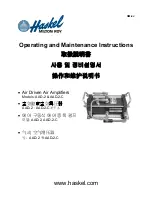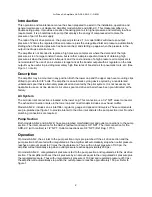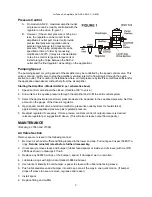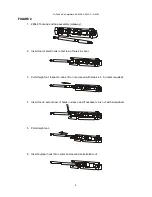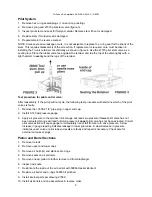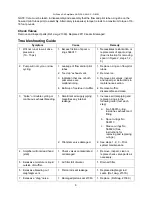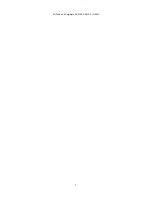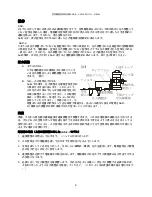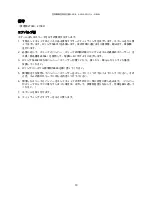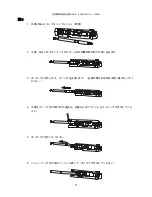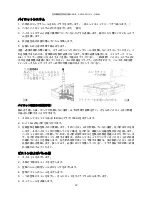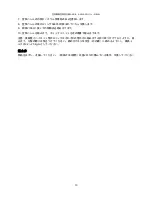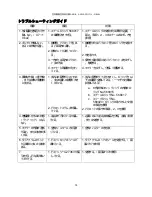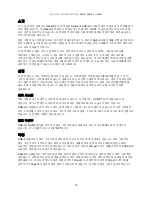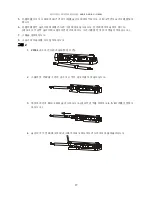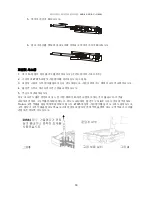
Air Driven Air Amplifiers, AAD-2 & AAD-2-C • OM-9J
6
NOTE: Care must be taken in disassembly and assembly that the flow and pilot tube o-rings be on the
flow and pilot tubes prior to assembly. Alternately (cross-wise) torque tie rods to a maximum torque of 16-
18 foot pounds.
Check Valves
Remove and inspect parts (Ref. dwg. 27360). Replace 28119 seats if damaged.
Troubleshooting Guide
Symptom Cause Remedy
1. Will not run at low air drive
pressures
(10 - 15 psi)
1. Excess friction of spool o-
rings 568017.
1. Necessitates relubrication or
replacement of spool o-rings.
(See instruction for removing
spool in Figure 2, steps 1, 2,
3.)
2. Pump will not cycle, or slow
cycling.
1. Leakage of flow and/or pilot
tubes.
2. “Iced up” exhaust vent.
3. Indication that one or both
pilot valves are
malfunctioning.
4. Build-up of residue in muffler.
1. Replace o-rings on flow pilot
tubes.
2. Remove ice.
3. Remove pilot valves, inspect
and repair per instructions in
maintenance section.
4. Remove muffler,
disassemble and clean.
1. Small inlet air supply piping
magnifies any internal
leakage.
1. Increase air inlet piping and
replace o-rings in the
following order (test each
step):
a. No. 568015 o-ring
inside hex exhaust port
fitting.
b. Spool o-rings No.
568017.
c. Sleeve o-rings No.
568020. (See
instructions for
removing and replacing
o-rings.)
3. “False” or double cycling or
continuous exhaust bleeding.
2. Pilot stem valve damaged.
2. See steps 1, 2, 3 – Pilot
system maintenance.
4. Amplifier will not dead head
(stall)
1. Check valves contaminated
or damaged.
1. Remove, inspect, clean or
replace check valve parts as
necessary.
5. Excessive moisture or liquid
outside of muffler.
1. Air filter full of water.
1. Drain air filter.
6. Excessive bleeding out
diaphragm vent.
1. Piston rod seal leakage.
1. Replace diaphragm rod
seals. (Ref. dwg. 27379.)
7. Excessive “drag” noise.
1. Damaged piston seal 27363.
1. Replace. (Ref dwg. 27369.)

